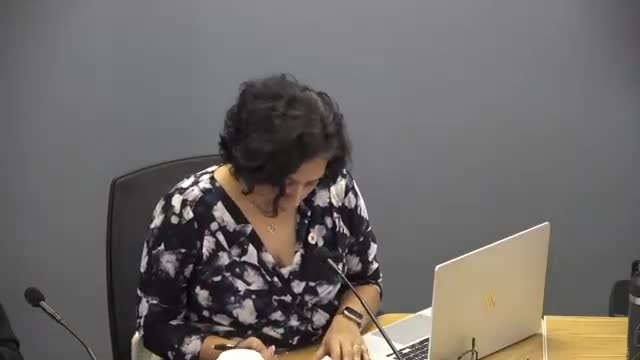Special-services director outlines updated TSES: district reports 747 special-education students
November 11, 2025 | NORTHFIELD PUBLIC SCHOOL DISTRICT, School Boards, Minnesota
This article was created by AI summarizing key points discussed. AI makes mistakes, so for full details and context, please refer to the video of the full meeting. Please report any errors so we can fix them. Report an error »

Sarah Pratt, the district’s director of special services, presented an updated Total Special Education System (TSES) manual that the district revised to align with statutory requirements and the district strategic plan.
Pratt said the TSES documents how the district identifies, evaluates and serves students with disabilities from birth through age 22. The manual lists required components including child-find, screening and referral procedures for early childhood (birth–age 2 and ages 3–6), eligibility pathways, service delivery across a continuum (inclusion, push-in, co-teaching, specialized instruction), interagency agreements and the district’s special-education parent advisory council.
On enrollment, Pratt said the December 1 child count last year was 747 students, "and so it equates to 18 to 19% of the population." She said the percentage is higher at elementary levels largely because speech and language services make up a larger share of early grades.
Pratt described ongoing service-delivery shifts at the secondary level to reduce time students spend away from general-education peers (LRE concerns). Those changes include formalizing co-teaching, offering partial-period "skinnies," and providing professional development and a co-teaching handbook created by inclusion coach Alicia Beltre. Pratt said the district partners with the Cannon Valley Special Education Cooperative for intensive (setting 4) services and has successfully transitioned some students back to district settings when appropriate.
Board members asked about homebound placements and the practical difference between the discrepancy model and a response-to-intervention (RTI/SRBI) eligibility model. Pratt said the district currently uses the discrepancy model but is working toward a stronger system of research-based interventions that could support an SRBI path for eligibility.
Pratt said the district will review the TSES annually and expand staff development and program evaluation to maintain consistent practice and compliance with state requirements.
Pratt said the TSES documents how the district identifies, evaluates and serves students with disabilities from birth through age 22. The manual lists required components including child-find, screening and referral procedures for early childhood (birth–age 2 and ages 3–6), eligibility pathways, service delivery across a continuum (inclusion, push-in, co-teaching, specialized instruction), interagency agreements and the district’s special-education parent advisory council.
On enrollment, Pratt said the December 1 child count last year was 747 students, "and so it equates to 18 to 19% of the population." She said the percentage is higher at elementary levels largely because speech and language services make up a larger share of early grades.
Pratt described ongoing service-delivery shifts at the secondary level to reduce time students spend away from general-education peers (LRE concerns). Those changes include formalizing co-teaching, offering partial-period "skinnies," and providing professional development and a co-teaching handbook created by inclusion coach Alicia Beltre. Pratt said the district partners with the Cannon Valley Special Education Cooperative for intensive (setting 4) services and has successfully transitioned some students back to district settings when appropriate.
Board members asked about homebound placements and the practical difference between the discrepancy model and a response-to-intervention (RTI/SRBI) eligibility model. Pratt said the district currently uses the discrepancy model but is working toward a stronger system of research-based interventions that could support an SRBI path for eligibility.
Pratt said the district will review the TSES annually and expand staff development and program evaluation to maintain consistent practice and compliance with state requirements.
View full meeting
This article is based on a recent meeting—watch the full video and explore the complete transcript for deeper insights into the discussion.
View full meeting
